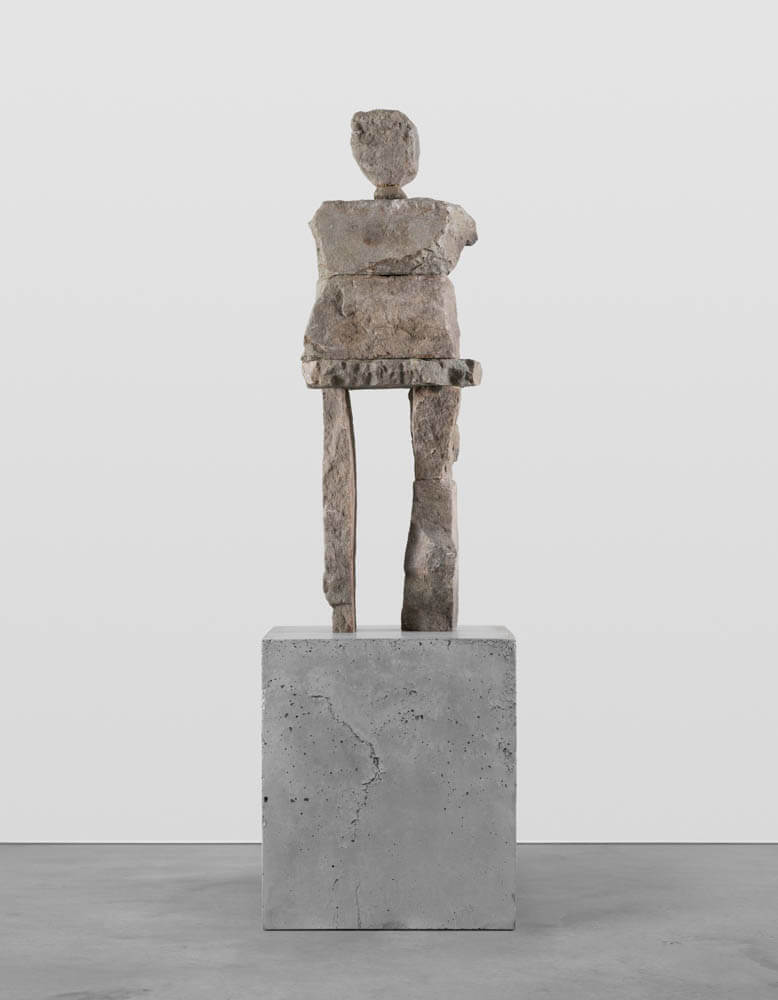
The Sure soul is confident and guided true. Someone who presents the truth.
Explore the works below. Before expanding the text, think to yourself:
What do you see?
What do you feel?
What might it be addressing?
What questions do you have?
Do you like it? Why or why not?

Expand to learn more
This is a photo still from the performance Opening the Great Wall (2001) by He Chengyao. Opening the Great Wall was He’s first time working with performance art. In her mind, it served almost as a reenactment or an homage to her mother, who, due to mental illness, would often walk around their town topless. In the performance, He stripped off her shirt and walked down the Great Wall of China. The ambiance is amplified by the work of HA Schult who had done an installation piece of crushed soda cans on the wall.
The work was not well received, with most complaints focusing on her nudity. These reviews led her to begin exploring the nude female body and its liberation in more depth. As seen in the photo, she is holding a red shirt and has a sweater tied around her waist. Her nudity is not necessary, it is chosen.
About the Artist
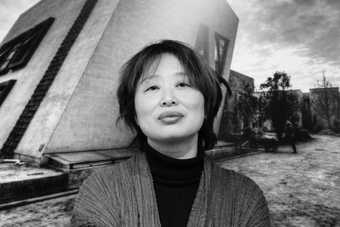
He Chengyao (b. 1964) is a Chinese artist who explores identity as it unfolds through her complicated relationship with her mother. Her work often incorporates themes of nudity, mental illness, and memory. She works primarily in photo, video, and performance art. Works like Mama and Me were a form of catharsis of He, for things that she has moved and healed from, with help from her work.

Expand to learn more
This is Counterculture (2022-2023), a sculptural installation by Rose B. Simpson. Counterculture consists of 12 larger-than-life human-like figures installed in a field in Williamstown, Massachusetts on the ancestral land of the Mohican people. The sculptures are mode from concrete and steel structures adorned with clay and found objects. They are meant to represent ancestors standing as witnesses to the history of the land and serve as a reminder of the Indigenous people who lived in and currently live in the region. The number of figures as 12 comes from an old Pueblo story that details the 12 stops a soul must take to reincarnation.
About the Artist
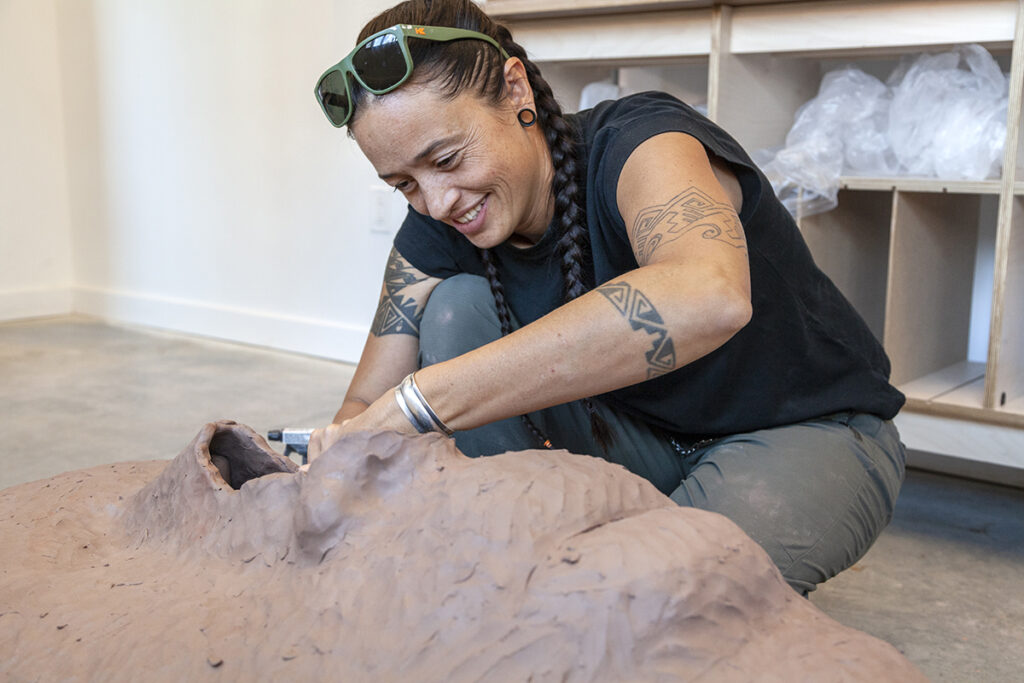
Rose B. Simpson (b. 1983) is a Tewa (Santa Clara Pueblo) sculptor who works primarily in ceramic. Her works often approach the past, present, and future as structured around the matrilineal line. She herself comes from a line of women ceramic artists. Her style is recognizable in the ‘Slap-Slab’ technique in which she assembles her pieces using small slips of clay, leaving the pieces and her own motions—brushstrokes, fingerprints, markings—evident and visible. Her figures are often post-apocalyptic, considering Native American survival in the wake of the climate emergency.
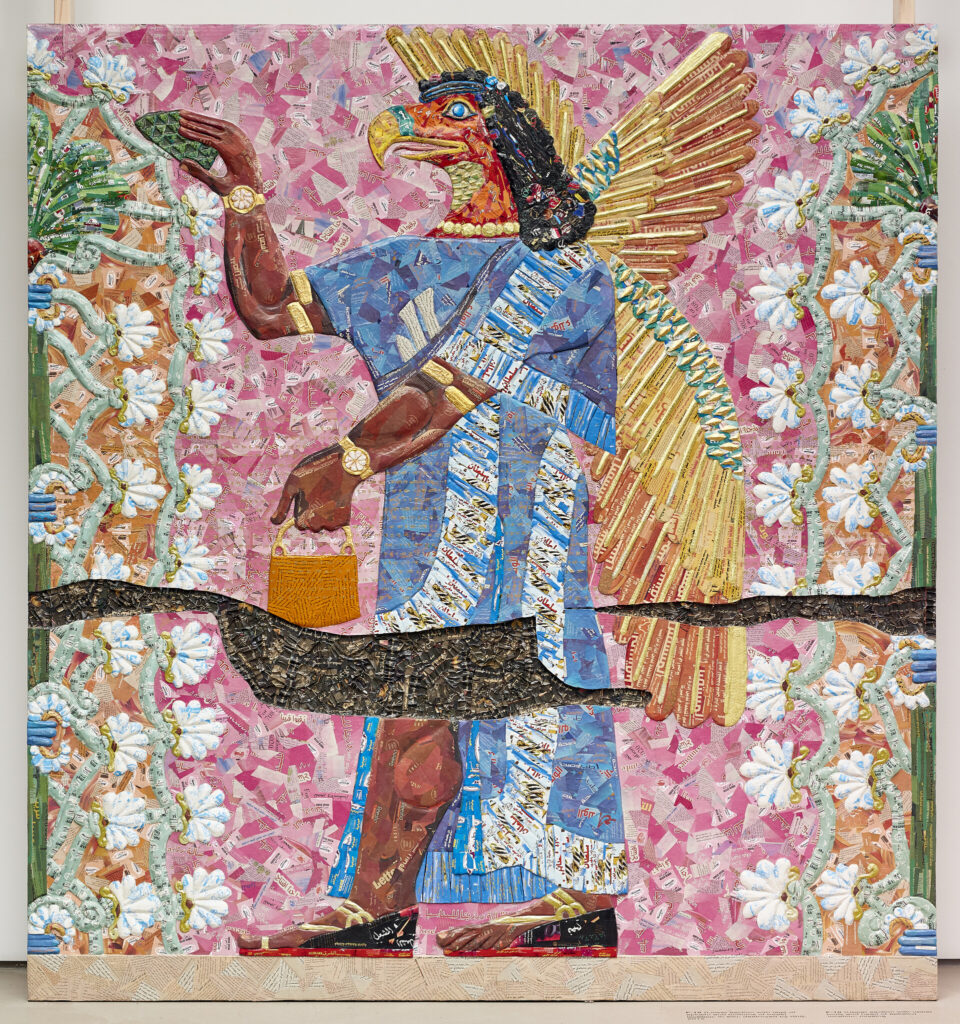
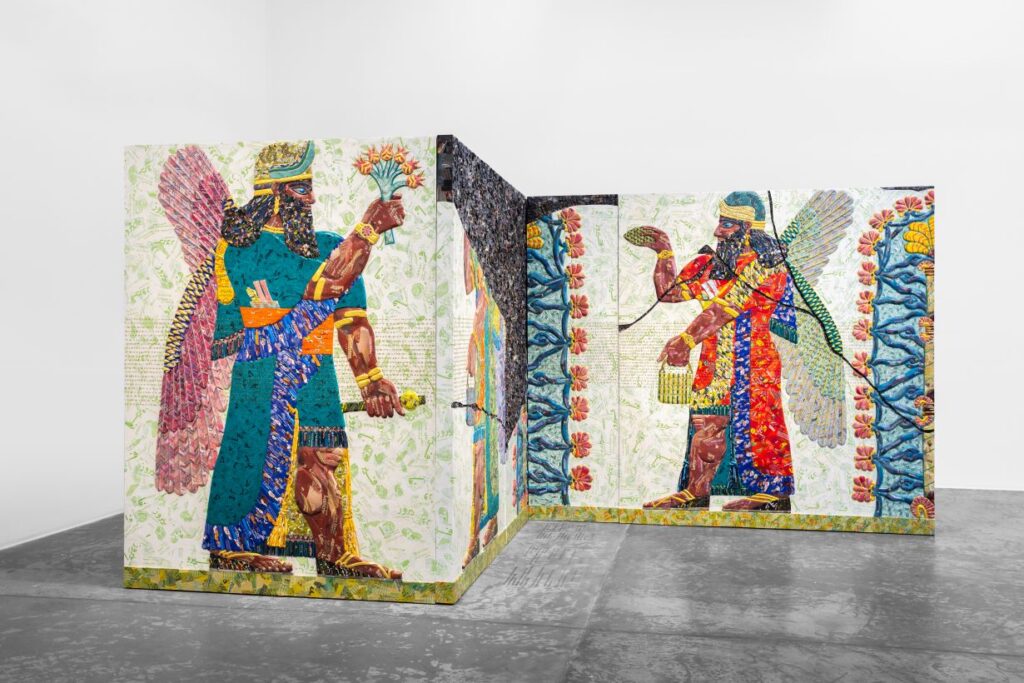
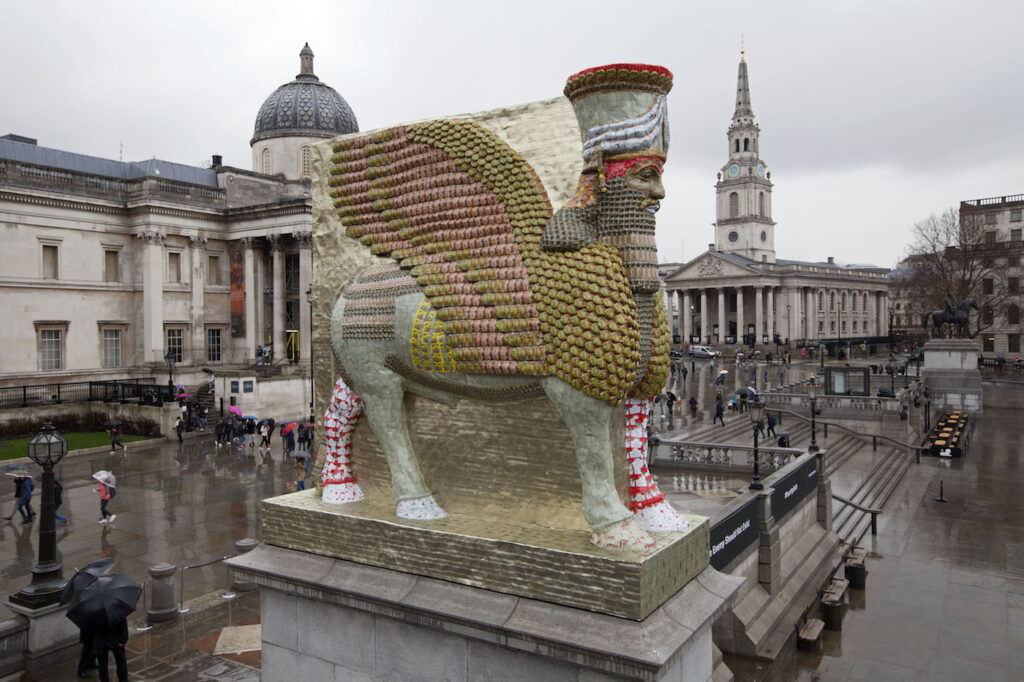
Expand to learn more
These are three parts of an ongoing series, The invisible enemy should not exist (2007-ongoing), by Michael Rakowitz. This series consists of pieces Rakowitz makes from Middle Eastern foodstuffs packaging and local Arabic newspapers. Each one is a replication of an item stolen from Egypt or from the National Museum of Iraq in Baghdad by the United States or other Western powers.
The first two photos shows replicas of a panels from Nimrud, an ancient Assyrian town, that are currently on display at the Metropolitan Museum of Art in New York City. The third photo is of a lamassu, the Assyrian guardian figure with the head of a human, the body of an ox or lion, and wings. It is located in Trafalgar Square in London and references the lamassu that stood at the Nergal Gate of Nineveh until its destruction by ISIS.
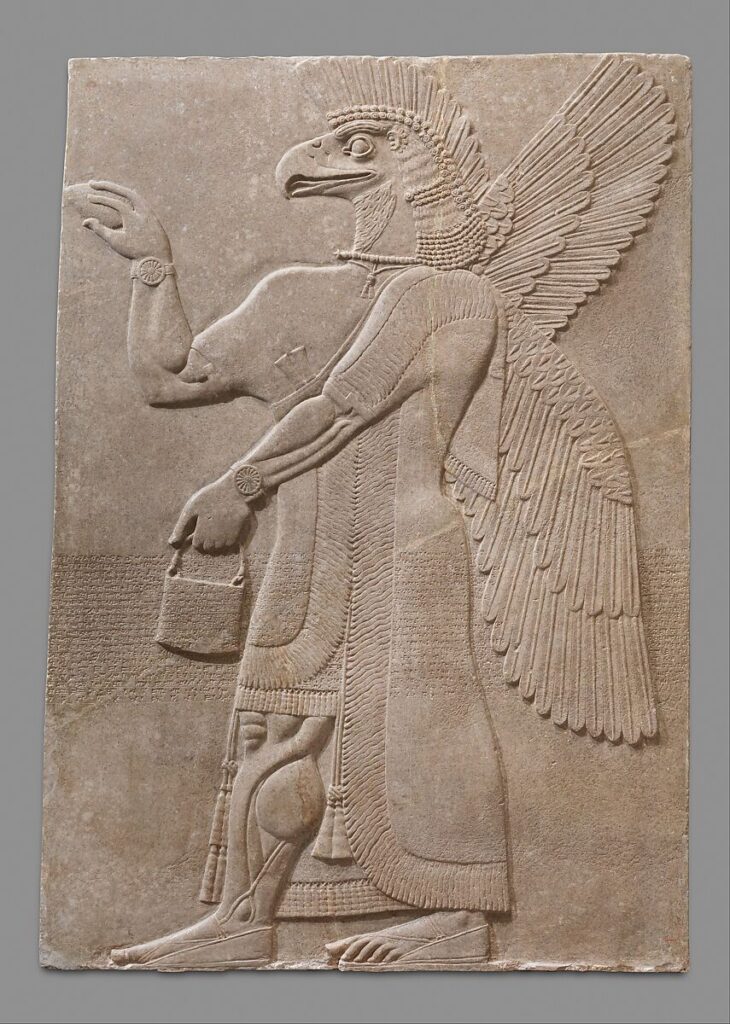
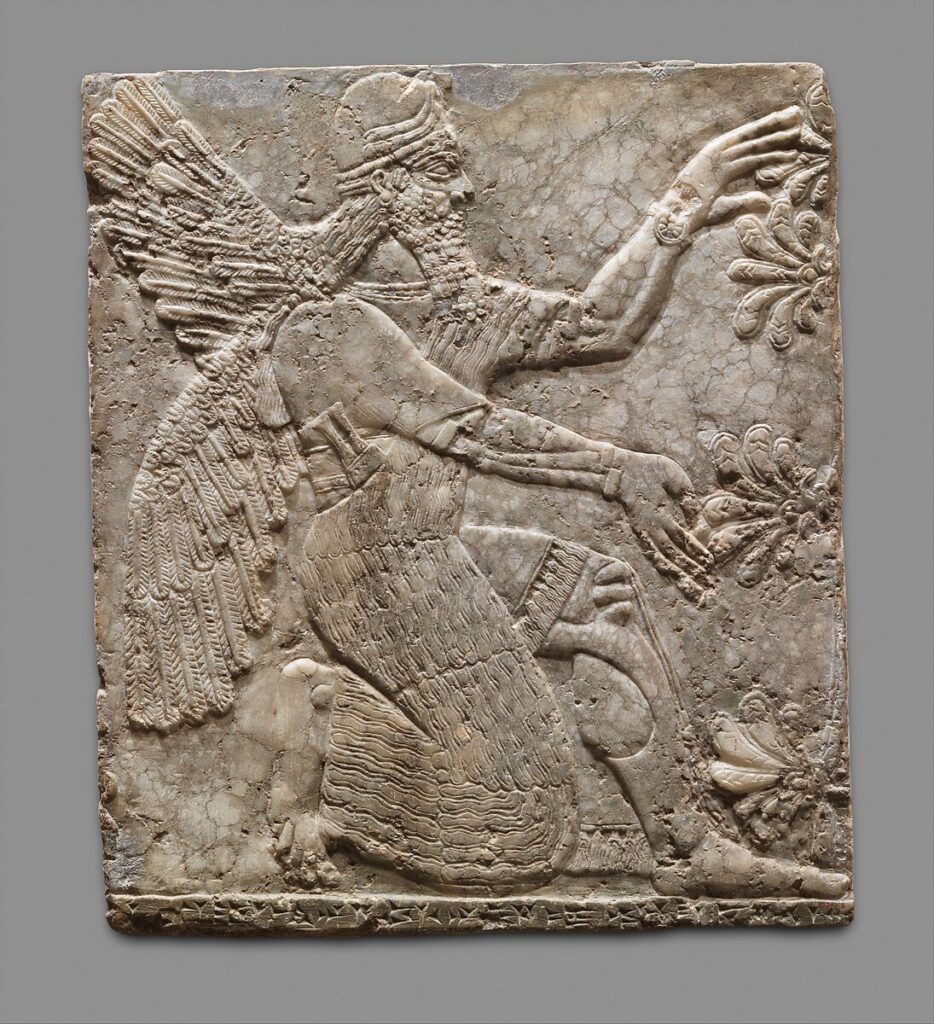
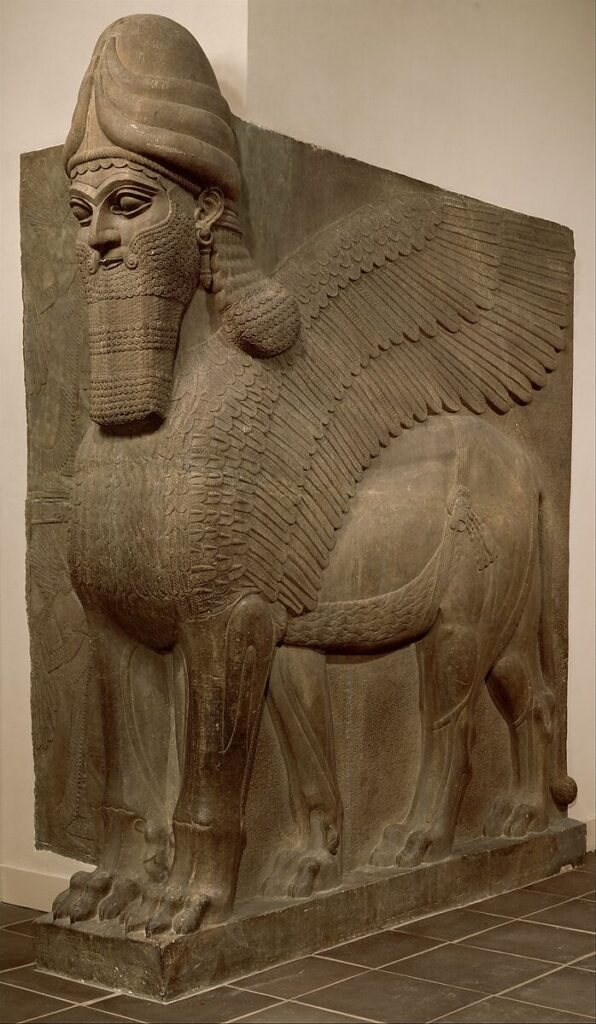
The materials used to make these works are not random packagings. On the lamassu, there exists an array of date syrup cans. These cans tell a story about the ramifications of the Iraq War on the human, economic, and ecological climate. Before the war, Iraqi dates were the countries second largest export after oil, however by the end of the war, only 1/10th of the date palms in the country remained.
About the Artist
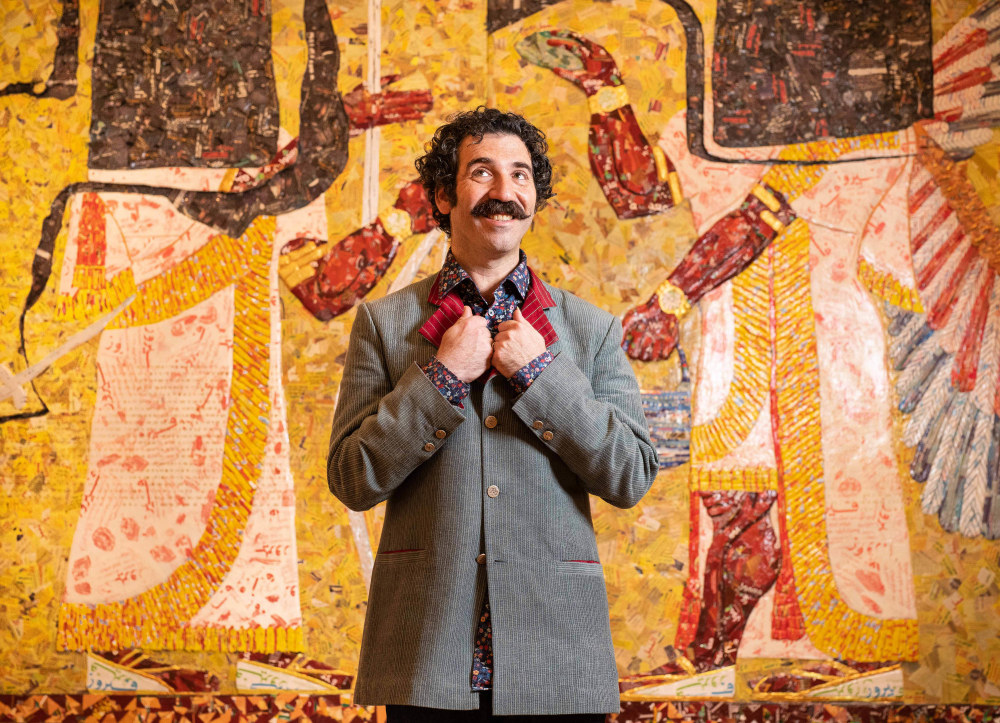
Michael Rakowitz (b. 1973) is an Iraqi-American artist whose art he describes as ‘troublemaking’. He is best known for conceptual works, particularly those shown outside of museums and galleries, often engaging with the public space. Much of his work, like The Invisible Enemy deals with histories around colonization and extraction.